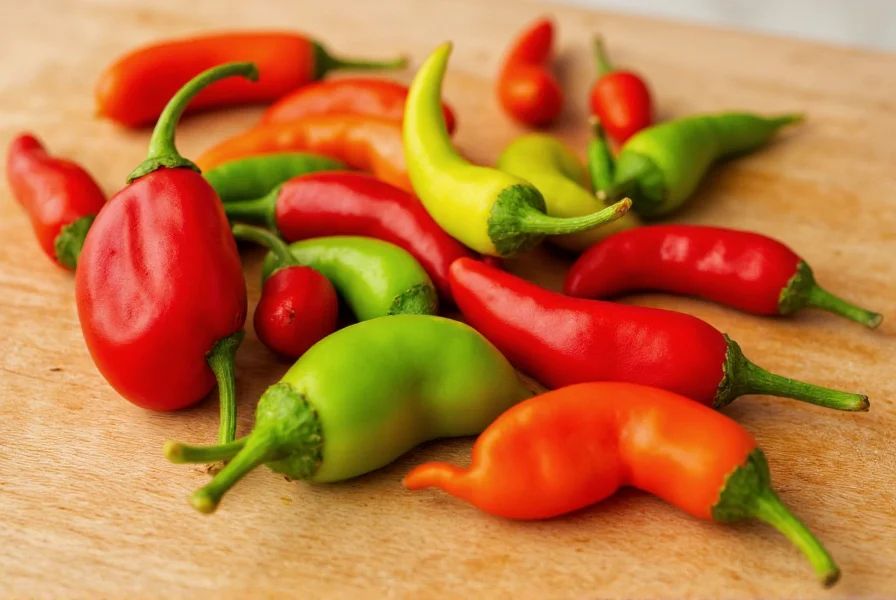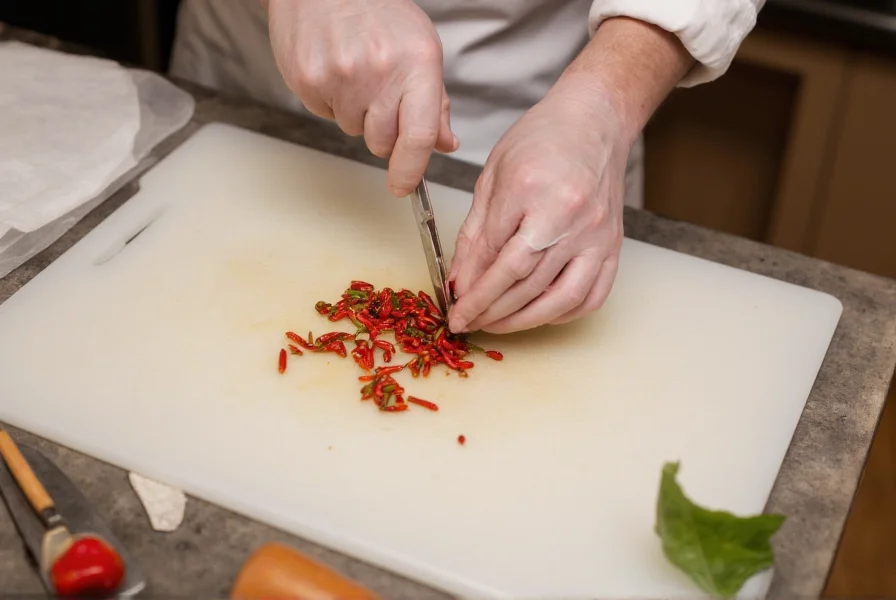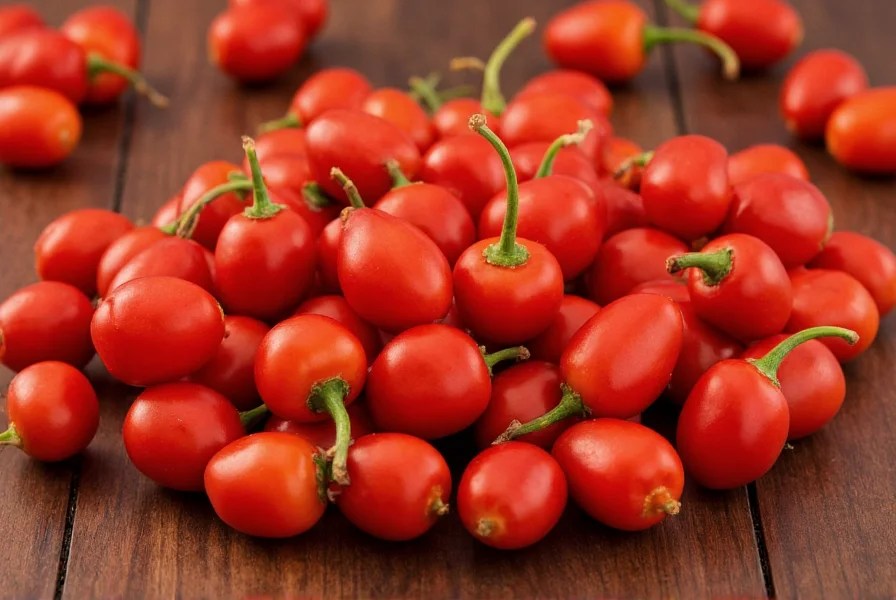When searching for information about little chili peppers, you're likely seeking details about these potent miniature peppers that pack remarkable heat in diminutive packages. Understanding the specific characteristics of little chili varieties helps home cooks and culinary professionals incorporate them effectively while avoiding common handling mistakes.
Defining Little Chili Varieties
Little chili isn't a single standardized variety but rather a category encompassing several small pepper types that share similar characteristics. The most common little chili peppers include:
| Pepper Variety | Size (inches) | Scoville Heat Units | Common Names |
|---|---|---|---|
| Thai Bird's Eye | 1-2 | 50,000-100,000 | Bird chili, Prik Kee Noo |
| Pequín | 0.5-1.5 | 30,000-50,000 | Bird's beak, Chile mosquito |
| Malagueta | 1-2 | 60,000-100,000 | Brazilian hot pepper |
These miniature peppers typically measure between half an inch to two inches in length, with conical or tapered shapes. Their small size belies their significant heat potential, making them valuable for adding controlled spice to dishes without overwhelming visual presence.

Flavor Profile and Culinary Applications
Little chili peppers deliver more than just heat—they contribute complex flavor dimensions to dishes. Unlike larger bell peppers that provide mild sweetness, these miniature varieties offer:
- Sharp, immediate heat that builds gradually
- Subtle fruity or citrus undertones depending on ripeness
- Earthy, sometimes smoky notes in dried forms
- Floral hints in certain cultivars like some pequín varieties
Chefs worldwide incorporate little chili peppers across diverse cuisines. Southeast Asian cooking frequently uses fresh Thai bird's eye chilies in curry pastes and dipping sauces. Mexican cuisine features pequín peppers in salsas and traditional adobos. Brazilian chefs utilize malagueta peppers in the iconic hot sauce "molho de pimenta." Understanding regional usage helps home cooks authentically replicate international dishes.
Handling and Safety Considerations
Working with little chili peppers requires proper handling techniques due to their high capsaicin concentration. These miniature peppers contain more heat compounds per volume than larger varieties, increasing the risk of skin and eye irritation.
Professional chefs recommend these safety practices when preparing little chili peppers:
- Wear disposable gloves during preparation
- Avoid touching face or eyes while handling
- Use separate cutting boards for chili preparation
- Wash hands thoroughly with soap and cold water after handling (hot water opens pores, increasing absorption)
- Remove seeds and membranes carefully—this is where most capsaicin concentrates
For those sensitive to capsaicin, consider using kitchen tools rather than fingers to remove seeds. If accidental contact occurs, dairy products like milk or yogurt provide immediate relief by binding to capsaicin molecules.

Growing Little Chili Peppers at Home
Gardeners increasingly cultivate little chili varieties in home gardens and containers due to their compact growth habits. These peppers typically thrive in warm climates but adapt well to container gardening in cooler regions.
Successful cultivation requires attention to these key factors:
- Provide 6-8 hours of direct sunlight daily
- Maintain consistent moisture without waterlogging soil
- Use well-draining potting mix with organic matter
- Harvest when peppers reach full color (red, orange, or yellow depending on variety)
- Start seeds indoors 8-10 weeks before last frost date
Container gardeners should select pots at least 12 inches in diameter with adequate drainage. Little chili plants typically reach 18-24 inches in height, making them suitable for balcony or patio gardening. Regular harvesting encourages continued production throughout the growing season.
Substitution Options for Little Chili Peppers
When little chili peppers aren't available, several substitution options maintain similar heat profiles while preserving dish integrity. The best alternatives depend on whether you prioritize heat level, flavor profile, or visual appearance.
For authentic little chili pepper substitution:
- Fresh serrano peppers (use 1.5:1 ratio due to slightly lower heat)
- Red pepper flakes (use sparingly—start with 1/4 teaspoon)
- Crushed red pepper (adjust to taste)
- Tabasco sauce (1/2 teaspoon replaces one small chili)
- Cayenne powder (use 1/8 teaspoon as starting point)
Remember that fresh peppers provide different texture and moisture content than dried alternatives, potentially affecting dish consistency. When substituting, always start with less than you think you need—you can add more heat but cannot remove it once incorporated.
Nutritional Benefits of Little Chili Peppers
Beyond their culinary value, little chili peppers deliver notable nutritional benefits. These miniature powerhouses contain concentrated amounts of beneficial compounds:
- Vitamin C: Higher concentration per weight than citrus fruits
- Vitamin A: Essential for vision and immune function
- Capasaicin: Associated with metabolic benefits and pain relief
- Antioxidants: Combat oxidative stress and inflammation
- Dietary fiber: Supports digestive health
Research suggests regular consumption of chili peppers correlates with various health benefits, including improved cardiovascular health and metabolic function. The capsaicin in little chili peppers may boost metabolism temporarily and reduce appetite, making them valuable components of balanced diets.
Storage Methods for Maximum Freshness
Proper storage extends the shelf life of little chili peppers while preserving their flavor and heat characteristics. Different storage methods serve various usage timelines:
- Refrigeration: Store unwashed peppers in perforated plastic bags for 2-3 weeks
- Freezing: Freeze whole peppers on baking sheet before transferring to freezer bags (keeps 6-12 months)
- Drying: Air-dry or use food dehydrator for long-term storage (up to 1 year)
- Vinegar preservation: Create chili-infused vinegar for cooking and flavoring
- Oil preservation: Store in olive oil in refrigerator (use within 1 month)
Avoid washing peppers before storage, as moisture accelerates spoilage. For immediate use within a few days, room temperature storage works well, but refrigeration significantly extends freshness for longer storage needs.
Conclusion
Little chili peppers represent a versatile and flavorful addition to culinary repertoires worldwide. Their compact size belies significant heat potential and complex flavor profiles that enhance countless dishes across global cuisines. By understanding proper handling techniques, storage methods, and substitution options, cooks can confidently incorporate these miniature powerhouses into their cooking. Whether grown in home gardens or purchased from markets, little chili peppers offer both culinary excitement and nutritional benefits when used thoughtfully and safely.











 浙公网安备
33010002000092号
浙公网安备
33010002000092号 浙B2-20120091-4
浙B2-20120091-4